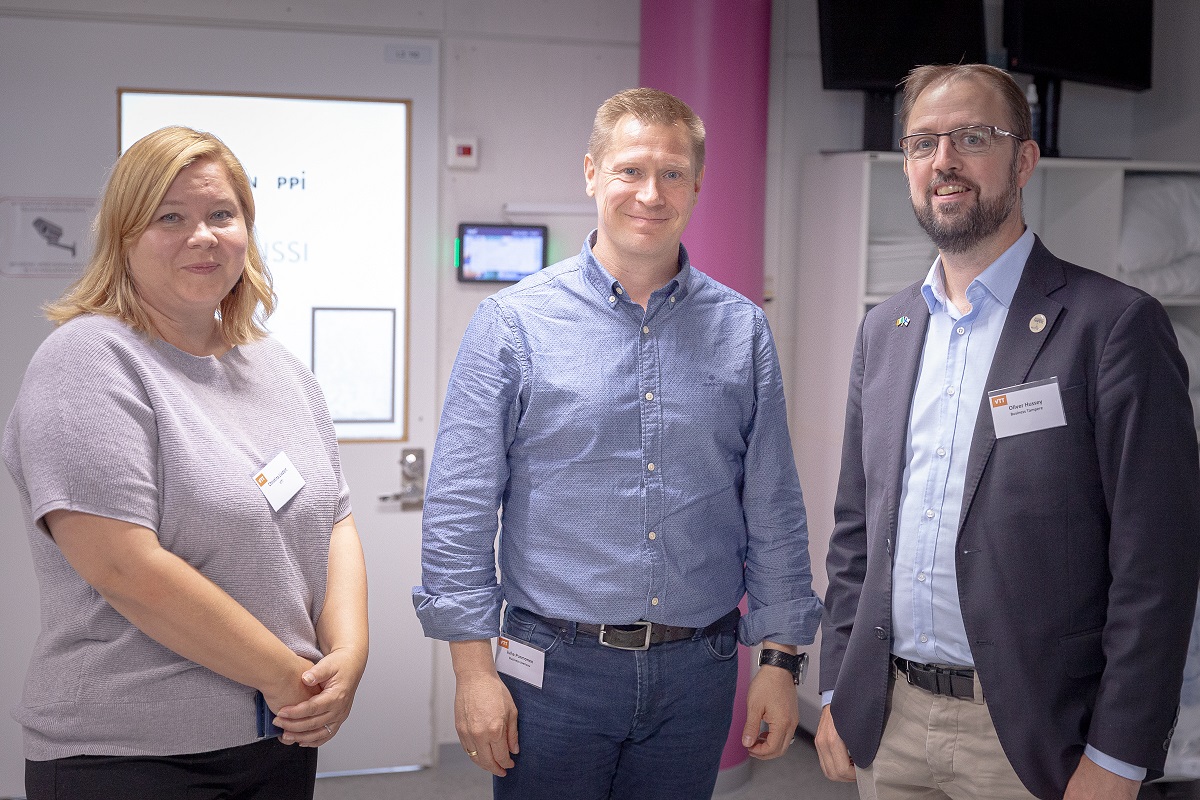Aiming to double the industrial production of photonics

Collaboration in the photonics sector is progressing at a good pace in Finland. The results of the business survey, marketing material for international networking and the expected roadmap for 2025-2030 will be published in the autumn.
Joensuu, Oulu, Tampere and Espoo are involved in building a national urban network of photonics in Finland. The urban network supports the growth and networking of the sector’s businesses as well as investments in Finland.
Each city has investigated the needs, current situation and plans for the near future of businesses in its region. The results of the business survey will be published in autumn 2024.
There is a shortage of suitable business premises in Joensuu. Photonics businesses prefer to work with research institutes, as they have access to the special equipment and facilities that the businesses need, as well as experts available, which is crucial to the development of the industry.
“The survey will give us an understanding of the national situation,” says Development Manager Juha Purmonen from Business Joensuu.
The results of the survey will also be used as the basis for the industry’s marketing package and a common roadmap.
“The marketing material includes arguments for, among other things, why businesses should invest in Finland and what the strengths of cities are. Business Finland, embassies and InnoCities can use the material for their own needs,” Purmonen says.
The need for workers is enormous – where can we find more talented students?
The industry has announced that 5,000 new workers will be needed over the next five years. Industrial production can even be doubled.
“Some workers will come from other industries and abroad, but more students are needed,” Purmonen says.
According to Tea Vellamo, the coordinator of the flagship photonics project PREIN, there is a major shortage of students with sufficiently in-depth knowledge in mathematics and photonics.
In practice, there is competition in Finland for mathematically talented students and competition with other countries for international students.
“It’s also difficult to market photonics to high school students. At PREIN, we also target children and young people. Practical applications are the best way to arouse interest”.
Basic research in the field has resulted in many start-ups, for example, in the measurement of soil carbon emissions, medical laser technology and the detection of counterfeit digital tags. The scale of photonics is wide.
One good way to attract international students is through Erasmus Mundus joint degree programmes, where students receive an EU grant to study at at least two different European universities. Both the University of Tampere and the University of Eastern Finland are involved in these photonics programmes.
In order for international students to stay and build their careers in Finland, Vellamo believes that better opportunities should be provided for students and businesses to meet each other.
“Finnish students can also apply for international programmes, but many are unaware of this option. Instead, they continue in a Finnish master’s degree programme after completing their bachelor’s degree,” Vellamo says.
One new incentive that attracts photonics experts is the I-DEEP doctoral pilot programme, which consists of 72 research teams and is implemented by seven Finnish universities. The training also takes into account the rapidly changing needs of the industry and the need for skilled workers in businesses.

National roadmap to be published soon
The guidelines for the development of photonics have been drawn up in a roadmap that will be published soon. The aim is to keep Finland’s expertise competitive and make full use of photonics research, innovations and technologies. The target groups of the roadmap are decision-makers, international researchers and industrial operators.
“The roadmap illustrates the potential of the industry and defines national priorities for photonics research, education and industry. At the same time, it contains proposals for action for decision-makers,” Juha Purmonen says.
The establishment of a Finnish Chips Competence Centre (FiCCC) is also topical for the photonics field. The Chips Act theme will also be implemented by Espoo, Tampere, Oulu as well as Joensuu under Photonics Finland.
In the future, photonics will play an even greater role in chips. Here too, Finland is a pioneer; in many other European countries, photonics has not yet been included at this stage. This is a good example of Finland’s vision,” says Purmonen.
In addition to the publication of the roadmap, the PREIN flagship project’s annual research seminar on photonics will be held on 19 November at Sokos Hotel Flamingo in Vantaa.
Previous article: Cities join photonics development – synergy support for companies for research and internationalisation – Innokaupungit
Photonics is one of the lead themes of InnoCities. Thematic cooperation brings together the resources of different cities and promotes the sharing of good practices as well as international cooperation and investments. The aim is to expedite the reform of business and the implementation of sustainable solutions in cities. InnoCities support innovation and engage in the practical application of research and experiment.
